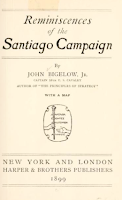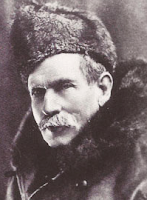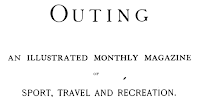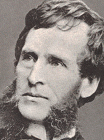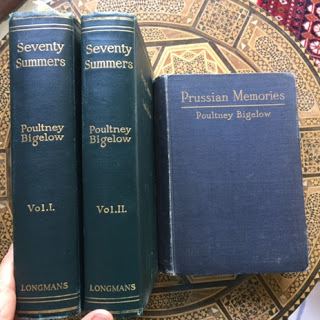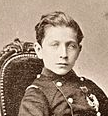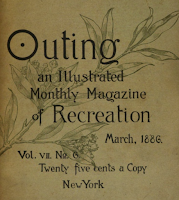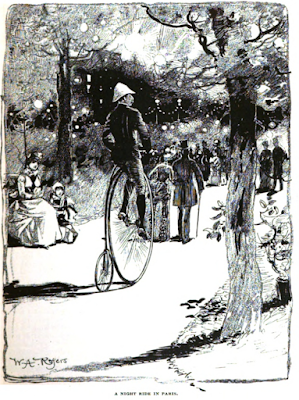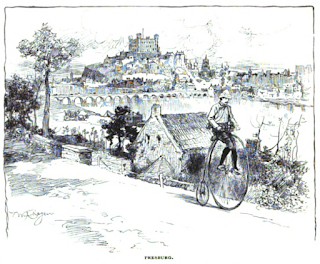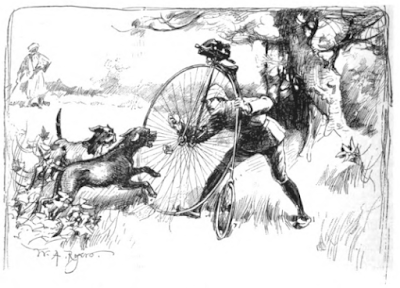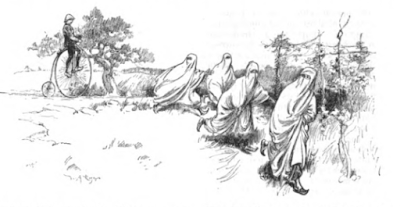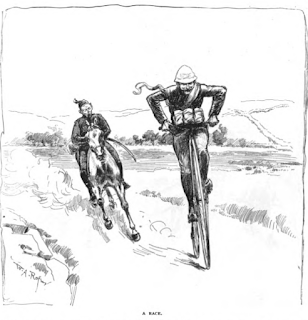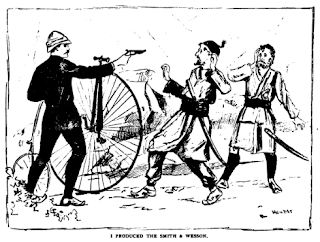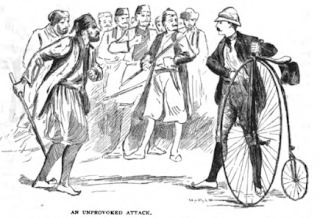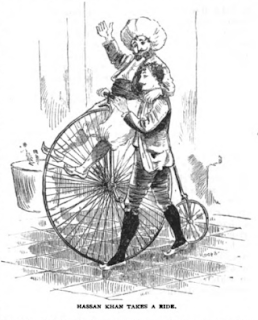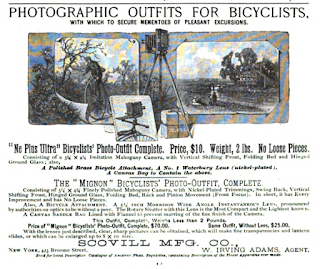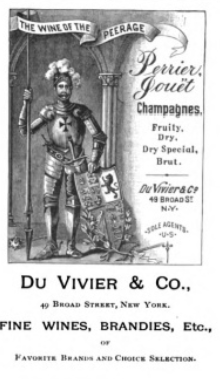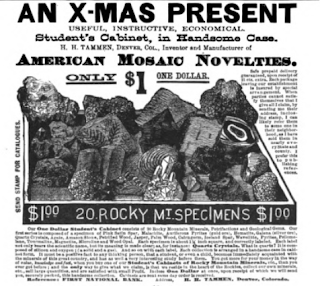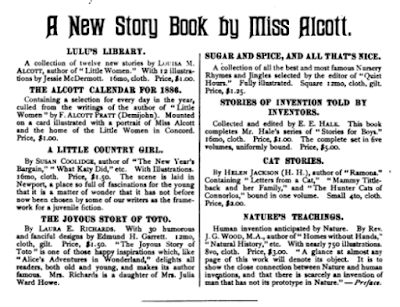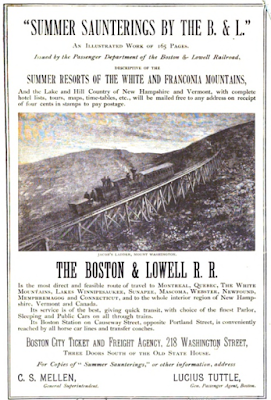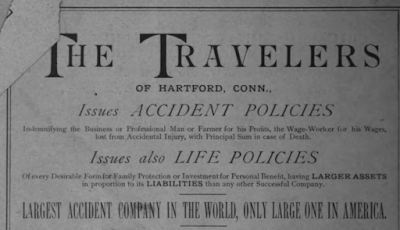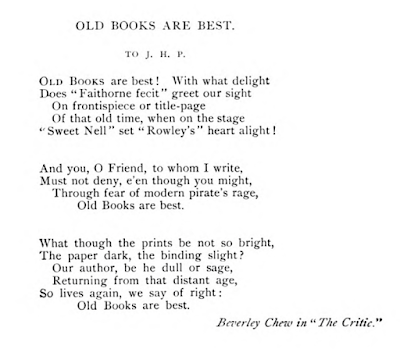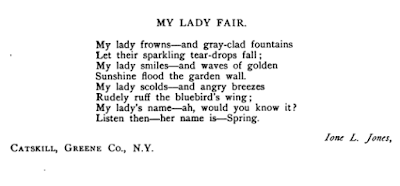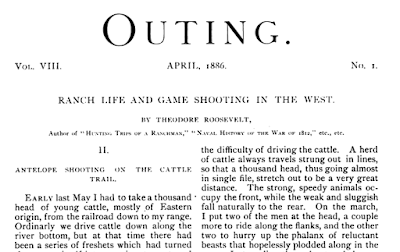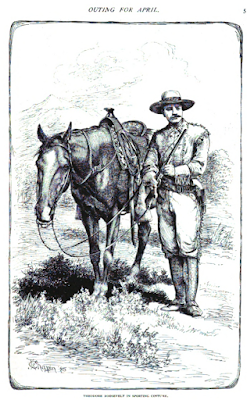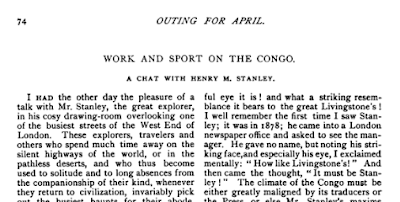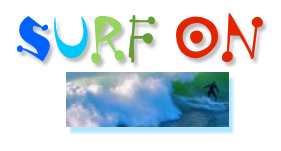
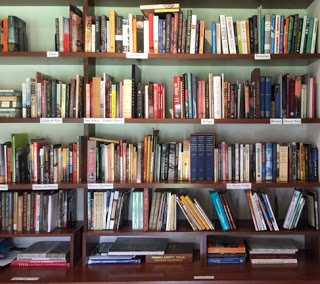
UPDATE: Bibliography has been posted here.
As those of you who follow this blog well know, I live in Mexico City and have been at work on a book about the Trans-Pecos (that, is Far West Texas) for more than a spell. Books on the Trans-Pecos are sparse on the ground south of the border, so when I travel to Texas I always try to scour a bookshop or three. Thus have I accumulated a working library, including not a few rare and unusual books. For this sort of project, archival research is also important to do– and I have done some– but it can be woefully expensive to travel to and spend time working through archives. So whenever an historian has taken the trouble to transcribe and publish anything relevant from any archive of interest to me, I am triply grateful for such a find.

One example is the work by Douglas C. McChristian, a retired research historian for the National Park Service: “Garrison Tangles in the Friendless Tenth: The Journal of First Lieutenant John Bigelow, Jr., Fort Davis, Texas,” published as a chapbook of about 60 pages by J.M. Carroll & Co in 1985. The copy I found is in excellent condition with, halleluja, a mylar cover and autographed by the editor.
Why is this excerpt from Lieutenant Bigelow’s diary, from 1884-1885 in Fort Davis, Texas, so interesting and important?
The Tenth refers to the Tenth Cavalry, one of the African American regiments — “Buffalo Soldiers”– established after the U.S. Civil War, famed for its exploits in the West during the Indian Wars of Bigelow’s time (and later, in the Spanish-American War, also of Bigelow’s time, but that would be another blog post).
Fort Davis, tucked among the volcanic Davis Mountains, and surrounded by hard desert for hundreds of miles around, was one of a string of US Army forts set up to protect the El Paso Road.
To give an idea of the remoteness, Bigelow wryly remarks:
Fort Davis, Texas. Thursday Jan. 15, 1885 … One is apt is a country like this to suspect everybody one meets with some discreditable reason for being here, without thinking that one is subject to the same suspicion oneself.

It was highly unusual for anyone to keep such a detailed, articulate, and thoughtful diary as did Lt. Bigelow. No doubt he was encouraged in this endeavor by his father, John Bigelow, a dedicated diarist himself, and newspaper owner and editor, author, ambassador, and publisher. (For one of my previous books, The Last Prince of the Mexican Empire, a novel based on the true story during the French Intervention in Mexico, I consulted Bigelow Sr.’s diary in the New York Public Library’s Manuscripts Division. More about Bigelow, Sr. anon.)
Back to Lt. Bigelow. Writes McChristian of Lt. Bigelow’s Fort Davis diary:
“A keen observer and a skillful writer, Bigelow left a vivid record of events and relationships at the post as he witnessed them. He included no expeditions or battles, no heroics, no glitter– only the realities of life on the frontier.”
Nuggets in Lt. Bigelow’s diary include:
Fort Davis, Tex. February 12, 1885 Have written to Chicago for 1/2 doz. base balls for the troop. The men have bats and bases. I hope my efforts to afford them recreation will counteract the unpleasant impression they receive from the extra drill that I give them and the increased severity of discipline to which I subject them.
The men were not so isolated as they might have seemed:
Fort Davis, Texas. Sat. Feb. 14, 1885… I read the report in the New York Herald today that Khartoum had fallen. From that paper I gather that the British do not comprehend yet the power of their enemy. They think of turning the tables with five or ten thousand additional troops. They will want five or ten times that many troops to conquer the Mahdi.
And Bigelow mentions meeting Quanah Parker:
Fort Davis, Tex. Tuesday Dec. 9, 1884. Have just returned from a call at Lt. Woodward’s where I met the Chief of the Comanches in the Indian Territory [Oklahoma]. His tribe is not regarded as civilized. It is behind the Choctaws, Chickasaws, Seminoles. All communications with his tribe from the Federal Government go to him. He assembled the heads of families with whom he discusses the matter. Ten years ago, says Woodward, this man wore a blanket and breech clout. Today he is dressed like any white man. He has two other Indians with him. All three are going tomorrow about 60 miles south of here to get a certain herb which they prize as a medicine. Clarke is to escort them with about 1/2 dozen men. Quanah has a determined, and intelligent, though not a bright look. His mother was a white woman captured in Texas when quite a child; who subsequently married an Indian.
[Quanah’s mother was Cynthia Ann Parker and his father a chief, Nocona. The “certain herb” they were heading south to harvest was peyote cactus, then abundant in the Big Bend along the Rio Grande.]
Lt. Bigelow and Quanah are among the personalities I will be including in my book on Far West Texas. Apropos of that, this November I will be presenting a paper about Bigelow at the Center for Big Bend Studies conference at Sul Ross State University– in heart of the Trans-Pecos. Indeed, there are continents more to Bigelow’s life than his brief posting to Fort Davis and these few pages of his diary might suggest. The original diary, which spans many more years, including his earlier postings in the Texas in the 1870s, is in the United States Military Academy (West Point).
There is also a substantial archive of John Bigelow Jr. (and Sr. and family) correspondence during the Texas years (and much more) at Union College in Schenectedy, New York.
Bigelow’s father, John Bigelow, Sr. was an ardent reader of Emanuel Swedenborg, having encountered the Swedish mystic’s books on a journey to Haiti in his work as an Abolitionist (whew, yes, that is all packed into in one sentence! Never a dull moment with John Bigelow, Sr.). So I have been wondering to what degree, if any, his son might have been influenced by those ideas. I have little to go on at this point, but one comment in Lt. Bigelow’s diary is suggestive:
Fort Davis, Tex. Dec 4, 1884… I have begun reading to Mary (a chapter every evening) a book that was given to her in Baltimore: Natural Law in the Spiritual World. I find it original, interesting, and edifying.
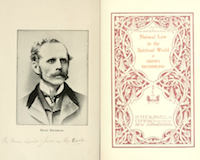
Natural Law in the Spiritual World was a best-seller of its day; the author was Scottish evangelist Henry Drummond (1851-1897). As far as I can ascertain from a search through the digital edition of this book however, Drummond was not retailing Swedenborgiana.
FURTHER NOTES ON JOHN BIGELOW, JR. (1854-1936)
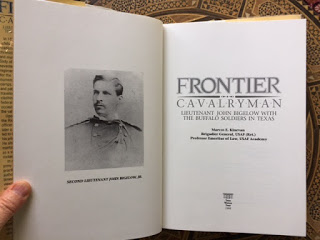
Bigelow’s time at Fort Davis, as well as his earlier stints out west, when he was Fort Duncan, Fort Stockton, scouting around the Big Bend out of Peña Blanco (now Peña Colorado, a public park a few miles south of Marathon), and elsewhere in Texas, are well covered in the excellent biography by Marcos Kinevan, Frontier Cavalryman: Lieutenant John Bigelow with the Buffalo Soldiers in Texas (Texas Western Press, 1998).
Also of note is the masters thesis by Howard K. Hansen, Jr., “The Remarkable John Bigelow, Jr: An Examination of Professionalism in the United States Army, 1877-91,” Old Dominion University, 1986, which provides a splendid introduction to Bigelow’s oeuvre as a military intellectual, including Mars-la-Tour and Gravelotte; The Principles of Strategy; and The Campaign of Chancellorsville.
Today Bigelow’s best-known publication is his series of 15 articles, “After Geronimo,” based on the diary he kept as a cavalry officer with the Tenth in Arizona, which he published in his brother Poultney Bigelow’s magazine, Outing in 1886-87. Some of these articles included illustrations by Poultney’s Yale University classmate and friend, the soon-to-be-world-famous artist Frederic Remington. John Bigelow, Jr.’s articles for Outingwere collected and republished in 1958 as On the Bloody Trail of Geronimo, with an introduction and notes by Arthur Woodward.
From his obituary in the New York Times, March 1, 1936:
… Expert strategist and tactician, Spanish War veteran, geographer, author, college professor and descendant of a family distinguished in American history, Colonel Bigelow was well-known in military and social circles both in the United States and abroad.
His father was John Bigelow, United States Ambassador to France under President Lincoln, and his mother, the former Jane Tunis Poultney, a social leader of her day. Poultney Bigelow, the author, is a brother.
The colonel was born in New York on May 12, 1854. After attending private schools in New York, Providence, R.I., and in Europe, he was appointed to West Point, from which he was graduated in 1877. One Jun 15 of that year he was commissioned as a second lieutenant.
Promoted to first lieutenant on Sept. 24, 1883, he was made a captain on April 15, 1893, a major on Dec. 8, 1902, and lieutenant colonel on Sept. 15, 1904, being retired at his own request the same day. From 1887 to 1889 he was adjutant general of the District of Columbia Militia.
Colonel Bigelow particularly distinguished himself during the Spanish-American War. He was wounded four times at the battle of San Juan Hill on July 1, 1898. For his heroic conduct then he was cited in general orders and received the Silver Star…
And I found him and his wife (née Mary Dallam) listed on p. 57 of the 1918 New York Social Register. Bigelow was then at Rutgers College in New Jersey.
Much more anon.
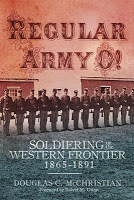
Next up on my reading list is McChristian’s latest, Regular Army O! Soldiering on the Western Frontier 1865-1891, published this year by University of Oklahoma Press.
> See the Q & A with McChristian over at the Civil War Books and Authors Blog

Review of John McWilliams’ The Pecan: A History of America’s Native Nut
Q & A with Mary S. Black on Her New Book, From the Frio to Del Rio
Marfa Mondays Podcasting Project
Find out more about
C.M. Mayo’s books, articles, podcasts, and more.

